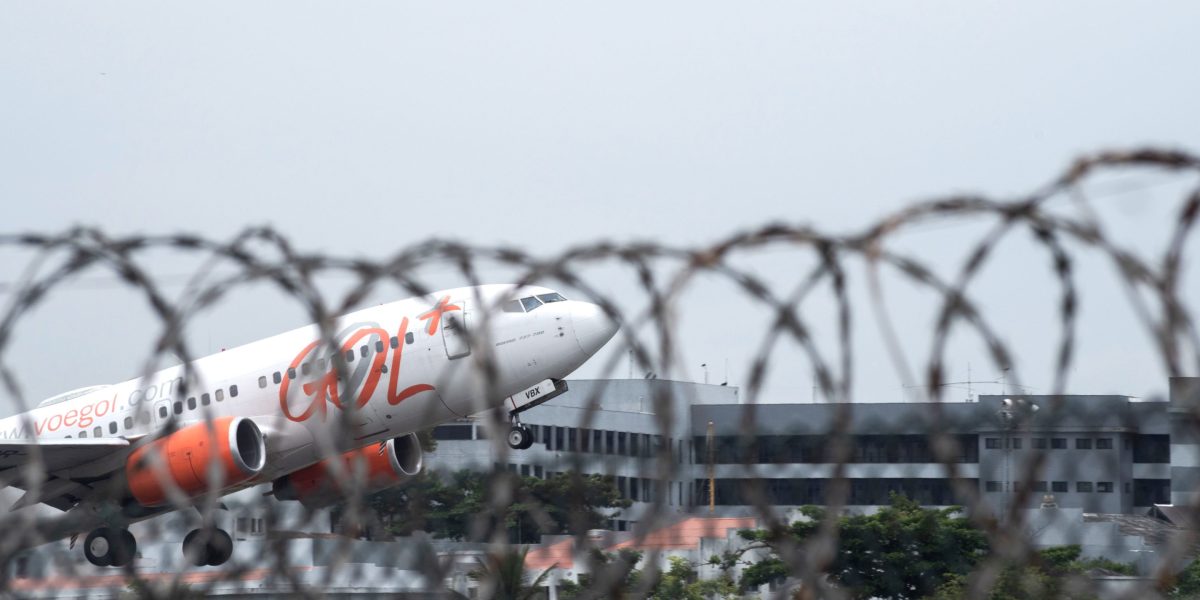Brazil’s government has presented its aid plan for the airline industry to the three largest players in the country with an announcement expected in the second half of the year, according to people familiar with the matter.
After setbacks and delays, talks with Azul SA, Gol Linhas Aereas Inteligentes SA and Santiago-based Latam Airlines Group are progressing but sticking points remain, the people said on condition they not be named discussing private matters.
President Luiz Inacio Lula da Silva’s team wants something back from the airlines in return for the rescue package. Some sort of compensation makes sense, Treasury Secretary Rogerio Ceron said in an interview, given the companies would receive a form of “structural aid” to alleviate their financial burdens.
Azul’s top executive acknowledged progress is being made. “We are working with the government on possibilities. We will have some news on the agreement in two weeks,” Chief Executive Officer John Peter Rodgerson said Monday by phone, adding that there’s no scheduled date for a full announcement of the rescue plan.
More accessible flights?
Lula, who campaigned on a pledge to restore prosperity in Brazil, wants to cut fares enough to allow the poor to fly regularly. In exchange for aid, it’s possible the government will demand more flight offerings. But that would run up against production delays on new aircraft and supply chain bottlenecks, according to Carolina Chimenti, an analyst at Moody’s Ratings. “It’s hard to picture a scenario where supply goes up significantly and fares go down” she said.
The state aid program has been under discussion for months and would create a permanent credit line for air carriers using 7 billion reais ($1.3 billion) from Brazil’s national civil aviation fund. Under the plan, the government would back loans from national development bank BNDES used to purchase airplanes or maintenance equipment, the people said. Loans for other purposes, however, would still require collateral from the companies themselves.
Interest rates for the loans are also still being negotiated. Lula’s economic team wants BNDES to charge standard rates but airlines are demanding more favorable terms, one of the people said.
Brazil’s government has presented its aid plan for the airline industry to the three largest players in the country with an announcement expected in the second half of the year, according to people familiar with the matter.
After setbacks and delays, talks with Azul SA, Gol Linhas Aereas Inteligentes SA and Santiago-based Latam Airlines Group are progressing but sticking points remain, the people said on condition they not be named discussing private matters.
President Luiz Inacio Lula da Silva’s team wants something back from the airlines in return for the rescue package. Some sort of compensation makes sense, Treasury Secretary Rogerio Ceron said in an interview, given the companies would receive a form of “structural aid” to alleviate their financial burdens.
Azul’s top executive acknowledged progress is being made. “We are working with the government on possibilities. We will have some news on the agreement in two weeks,” Chief Executive Officer John Peter Rodgerson said Monday by phone, adding that there’s no scheduled date for a full announcement of the rescue plan.
Lula, who campaigned on a pledge to restore prosperity in Brazil, wants to cut fares enough to allow the poor to fly regularly. In exchange for aid, it’s possible the government will demand more flight offerings. But that would run up against production delays on new aircraft and supply chain bottlenecks, according to Carolina Chimenti, an analyst at Moody’s Ratings. “It’s hard to picture a scenario where supply goes up significantly and fares go down” she said.
The state aid program has been under discussion for months and would create a permanent credit line for air carriers using 7 billion reais ($1.3 billion) from Brazil’s national civil aviation fund. Under the plan, the government would back loans from national development bank BNDES used to purchase airplanes or maintenance equipment, the people said. Loans for other purposes, however, would still require collateral from the companies themselves.
Interest rates for the loans are also still being negotiated. Lula’s economic team wants BNDES to charge standard rates but airlines are demanding more favorable terms, one of the people said.
Gol’s eligibility remains a question mark, since the company is carrying out its Chapter 11 bankruptcy process in the US. According to Brazilian law, companies that are restructuring their debts in court face restrictions when accessing credit from public funds. Any additional debt from the government would need to be approved by a judge and be included company’s exit financing plan, Chimenti said.
There have been conversations around Gol potentially requesting the aid via Abra Group Ltd., the Colombian holding company that controls both Gol and Avianca, according to people familiar with the matter. Abra didn’t respond to a request for comment.
Brazil has been working on a plan to help troubled carriers and reduce fares since Lula took office, but opposition from the economic team delayed the process. The finance ministry, for example, questioned the urgency of bailing out the sector amid concerns about overspending and Azul’s talks to merge with Gol.
Structural solution
According to Ceron, the government needed more time to observe how companies handled their financial troubles. In the end, it chose to work on a structural solution instead of just providing emergency help. The focus, the treasury secretary said, is to help carriers get cheaper long-term financing.
As much as Lula wants to make flying more affordable, Chimenti doesn’t see any potential for carriers to cut fares given the state of their finances. And the aid package would do little to help as costs remain high and supply constraints persist.
“Gol is in the middle of a Chapter 11, Latam has just exited a Chapter 11, and Azul has a more complicated balance sheet issue,” the Moody’s analyst said. “There is no commercial motivation for companies to cut fares, unless that is something that is subsidized or mandated by the government.”

